In this post, I want to share with you some delicious and nutritious high-protein foods that are not meat.
As we all know, protein is an essential nutrient for maintaining a healthy diet and building strong muscles. And while many of us often turn to meat as a primary source of protein, there are plenty of delicious and versatile options that are not meat that can add a delightful new dimension to your meals.
From beans to quinoa, these non-meat options are not only packed with protein but also offer a wide variety of flavors, textures, and cooking possibilities.
So, whether you’re a vegetarian, vegan, or simply looking for new meal ideas, I encourage you to try these plant-based high-protein foods.
| Food | Protein (grams) per serving | Serving size (grams) | Serving size (cups) |
|---|---|---|---|
| Seitan | 25 | 110 | 1 cup |
| Tofu | 20 | 248 | 1 cup |
| Beans | 23 | 180 | 1 cup |
| Lentils | 18 | 198 | 1 cup |
| Quinoa | 8 | 185 | 1 cup |
| Hemp seed | 10 | 30 | 3 tablespoons |
| Almonds | 7 | 28 | 1/4 cup |
| Pumpkin seeds | 6 | 30 | 1/4 cup |
| Peas | 9 | 160 | 1 cup |
| Broccoli | 3 | 120 | 1 cup |
| Brussels sprouts | 3 | 130 | 1 cup |
| Artichokes | 4 | 120 | 1 medium artichoke |
| Nutritional yeast | 8 | 30 | 1 tablespoon |
| Amaranth | 9 | 246 | 1 cup |
| Chlorella | 3 | 5 | 1 tablespoon |
| Spirulina | 12 | 20 | 2 tablespoons |
| Buckwheat | 6 | 168 | 1 cup |
| Teff | 10 | 189 | 1 cup |
| Rolled Oats | 13 | 160 | 1 cup |
The table above provides a quick glance at the protein content of various plant-based foods, but there’s much more to learn about each of these options. To learn more about these foods and how to incorporate them into your diet, be sure to check out the rest of this article.
1. First Off, We Got Seitan
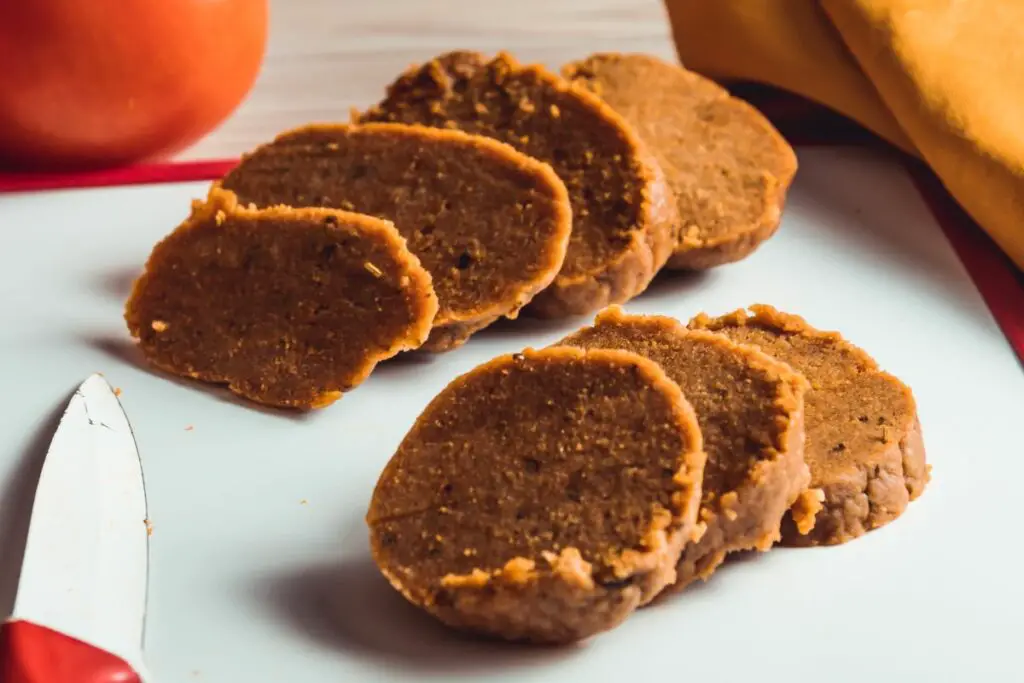
Seitan, also known as wheat gluten, is a vegetarian and vegan protein source made from wheat protein.
Seitan has a chewy, meat-like texture and can be used in various dishes as a meat substitute. It is often flavored with soy sauce, ginger, and other spices before being cooked by simmering, frying, or baking.
This gluten-based meat substitute packs 25 grams of protein per 3.5 ounces or 100 grams.
However, if you don’t tolerate gluten, then this one is not for you, unfortunately.
Read Also: How To Cook For Vegetarian Guests – Etiquette And Food Ideas.
2. Tofu, Tempeh, And Edamame
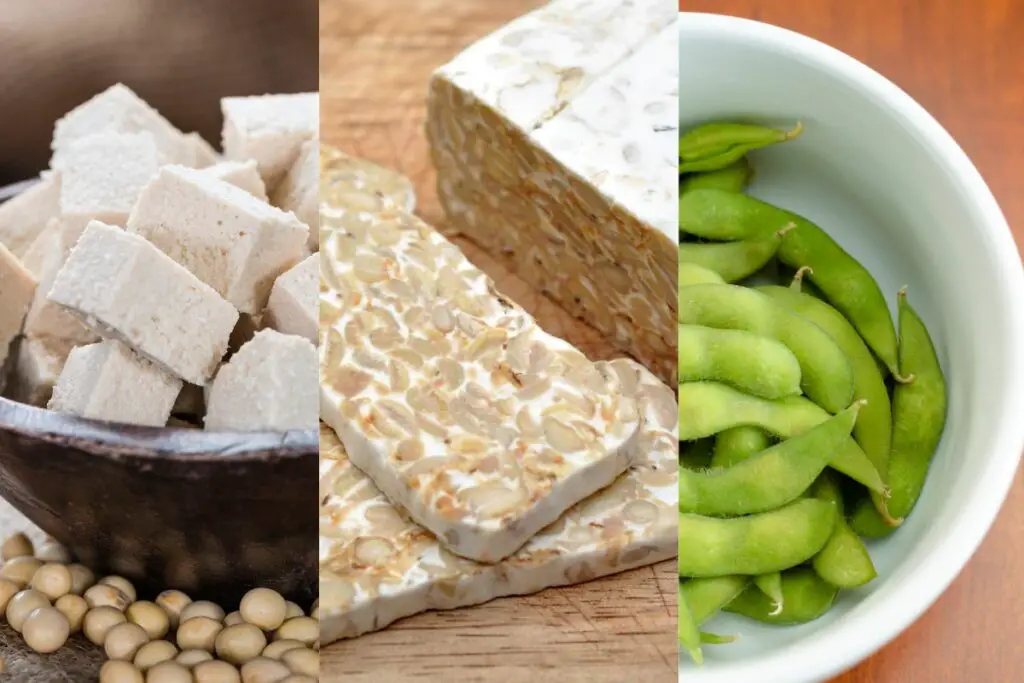
These three are all solid options from the soybean family. They pack 12-20 grams of protein per one cup or 248-gram serving.
Edamame also has folate, vitamin K, and fiber. Tempeh is loaded with probiotics, B vitamins, and minerals, and tofu is rich in essential amino acids, minerals, and vitamins, including calcium, manganese, iron, and vitamin A, all the good stuff that your body needs.
Tofu, also known as bean curd, is considered the most tasteless food in the world, but I think it can be a rather versatile ingredient that can be used in a variety of dishes. It can be stir-fried, grilled, or added to soups and stews. Try marinating tofu in soy sauce, ginger, and garlic before grilling or stir-frying for added flavor. But don’t forget to season it.
Tempeh is made from fermented soybeans and has a nutty flavor. It can be sliced and added to salads, sandwiches, or stir-fries. Try marinating tempeh in a mixture of soy sauce, vinegar, and spices before grilling or sautéing.
Edamame is a type of green soybean that is often served as a snack or as a side dish. It can be steamed or boiled and seasoned with salt or other spices. Try adding edamame to salads, soups, or pasta dishes for added protein.
3. Beans
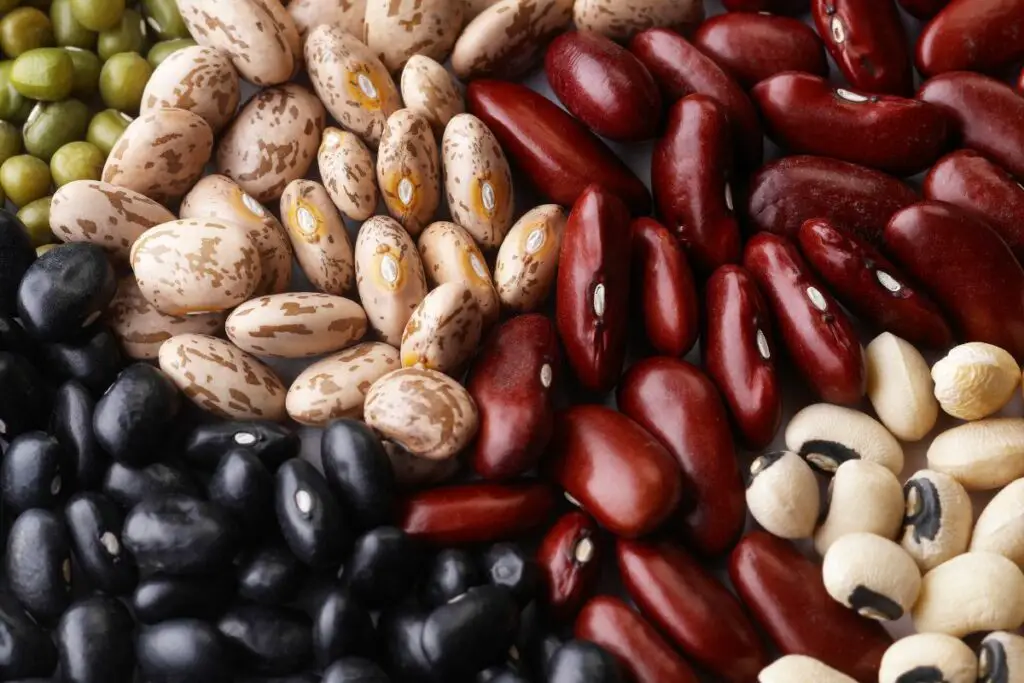
Kidney, black, pinto, and fava beans are the legume with the highest protein content. Actually, most other varieties of beans are all packed with protein. Chickpeas (garbanzo beans) and white beans also pack a protein punch. Most types of beans contain 15-25 grams of protein per cooked cup.
Beans are a nutritious and versatile food that can be easily added to your diet. Some ways to include beans in your meals include using them as a meat replacement in dishes such as chili or tacos, adding them to salads and soups, making bean dips and hummus, using them in sandwiches or wraps, or incorporating them into breakfast dishes.
Always remember to rinse and drain canned beans and soak and cook dry beans before using.
4. Peas
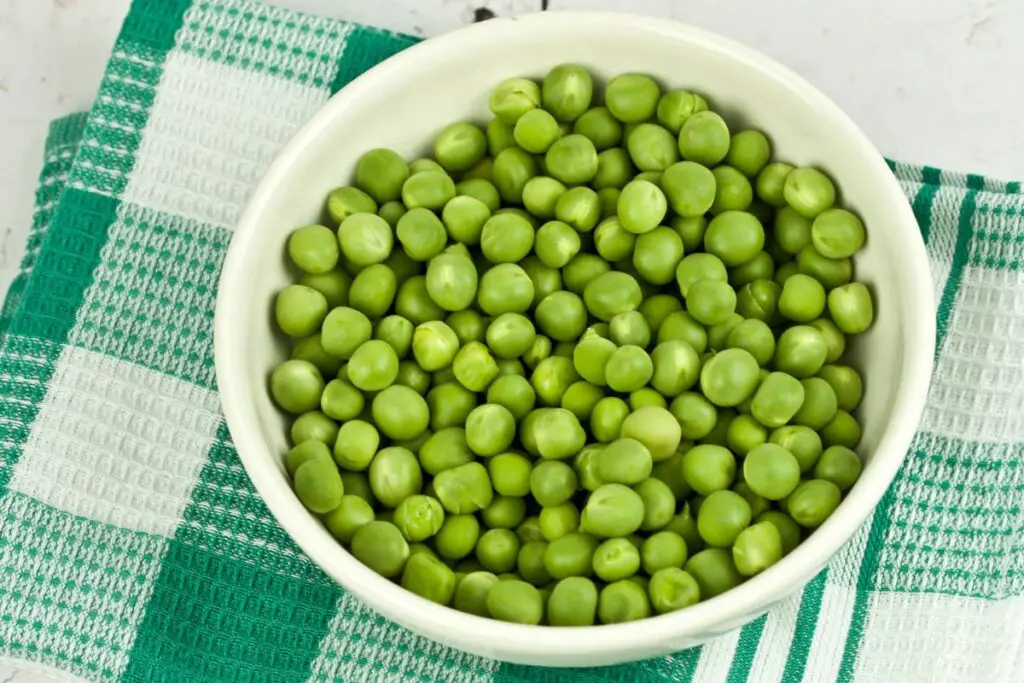
Peas are another great source of plant-based protein. Popular and versatile options like green or yellow peas contain 9 grams of protein per cooked cup, can be used in delicious thick pea soups, stews, and curries, or can be ground into flour and even used in baking.
5. Lentils
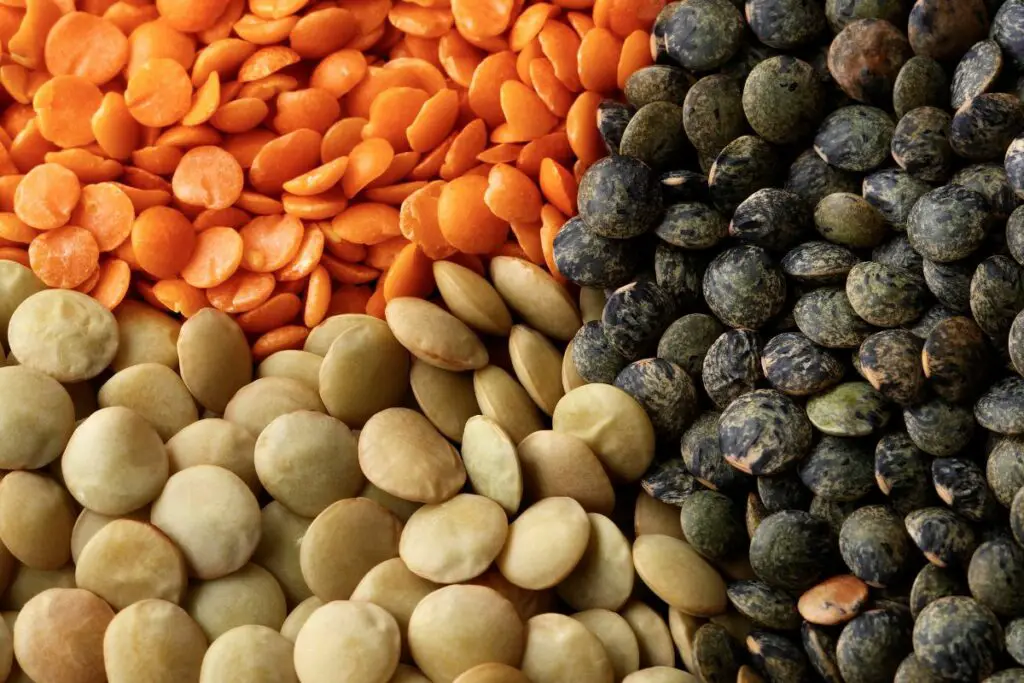
Lentils, like beans, come from a different variety of legumes and are a great option if you are looking for high-protein foods that are not meat.
These small disc-shaped legumes are high in protein and fiber. Lentils pack 18 grams of protein per cooked cup, plus fiber, folate, manganese, and iron. Plus, they’re loaded with antioxidants and other health-promoting compounds.
Lentils are versatile and nutritious ingredients that can be used in various dishes. They can be used in soups, stews, salads, and as a side dish. My favorite way to cook lentils is in a slow cooker.
Here is how to prepare lentils for cooking.
6. Quinoa
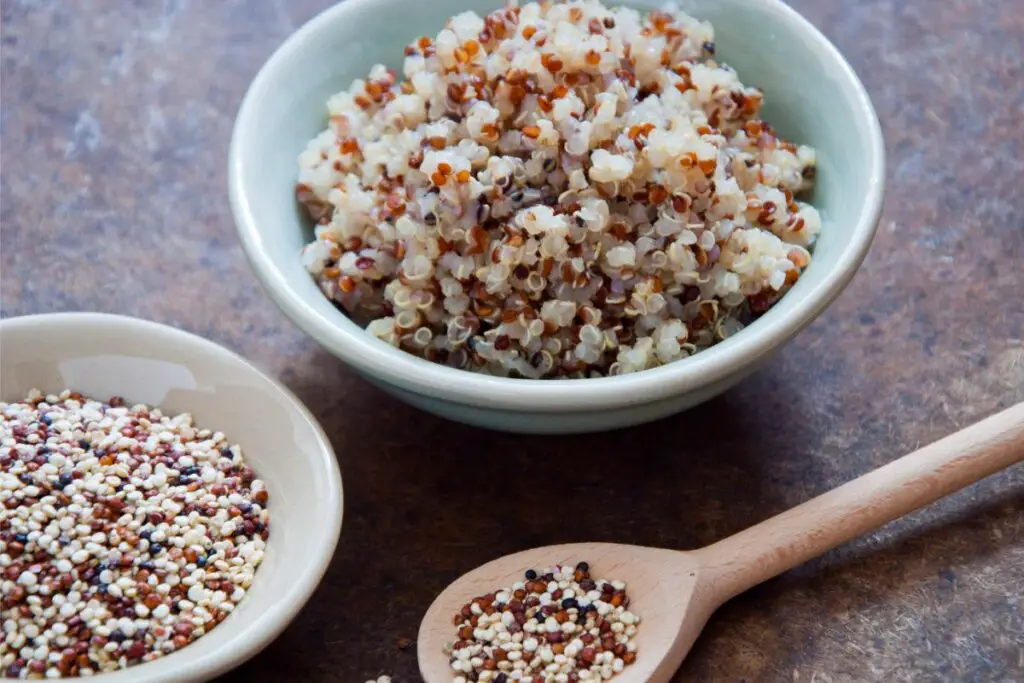
Quinoa is another solid plant-based protein choice. Gluten-free, high in protein, fiber, and essential amino acids. It packs in 8 grams of protein per cooked cup.
I love using quinoa in my cooking because it is so versatile and adds a great nutty flavor to dishes. I often use it as a side dish, simply cooking it according to the package instructions and adding my favorite seasonings and herbs.
It is a great option for adding to salads for added texture and flavor. It is a great substitute for rice in many dishes, and it adds a boost of protein to soups, stews, and casseroles.
Quinoa is defiantly a staple in my kitchen, and I recommend using it in your cooking.
7. Hemp Seeds

Hempseed is a highly nutritious seed with protein and essential fatty acids. It packs in a staggering 10 grams of protein per 3 tablespoons.
Hemp seeds can be used in a variety of ways in food and cooking. They can be added to smoothies for a boost of protein, and healthy fats sprinkled on top of oatmeal or yogurt for added texture and flavor or mixed into baked goods such as bread or muffins.
They can also be added to salad dressings, dips, and spreads as a thickener and to add a nutty flavor.
To use hemp seeds in cooking, they can be toasted or roasted for added flavor or ground into a powder to use as a flour substitute. Overall, hemp seeds are a versatile and nutritious addition to any meal.
8. Nuts and Seeds

Almonds, pumpkin seeds, pistachios, and sunflower seeds are all high in protein. Almonds contain 7 grams of protein per 1/4 cup, and pumpkin seeds contain about 6 grams per 1/4 cup.
Nuts and seeds are a great addition to many types of food and cooking. They can be used in trail mix, granola, or as a topping for salads and yogurt.
You can also add nut and seed butter like tahini or almond butter to smoothies for added protein and healthy fats.
9. Brussels Sprouts
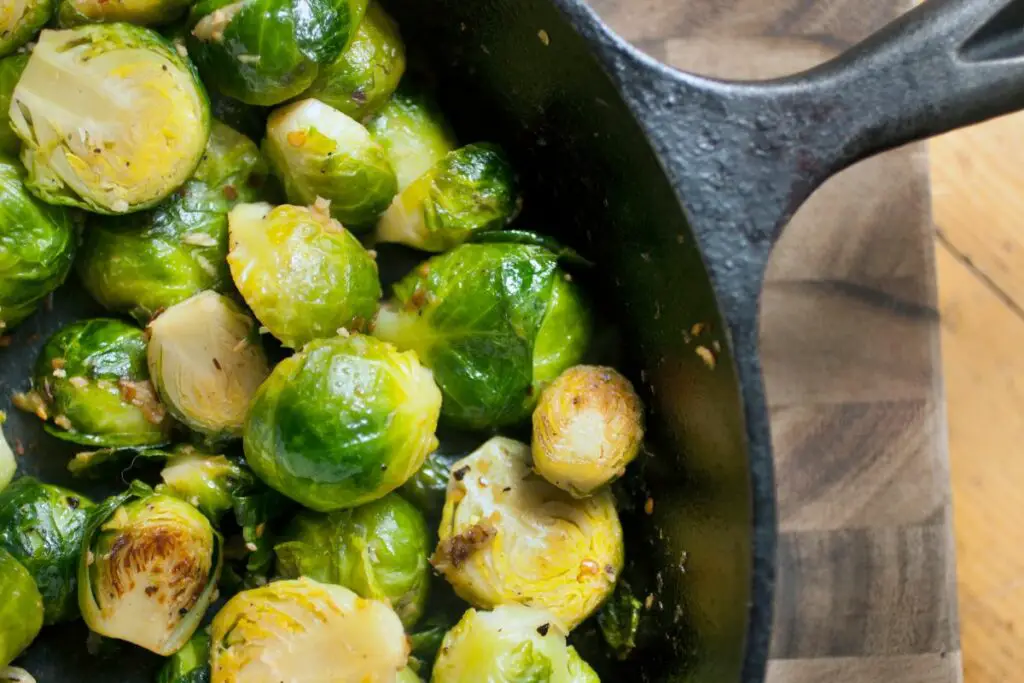
Brussels sprouts may not be everyone’s favorite, but they are high in protein, essential vitamins, and minerals. They will give you 3 grams of protein per cooked cup.
Roast ’em, sauté ’em, or shave ’em raw in a salad. They’re also loaded with antioxidants and other health-promoting compounds.
10. Artichokes
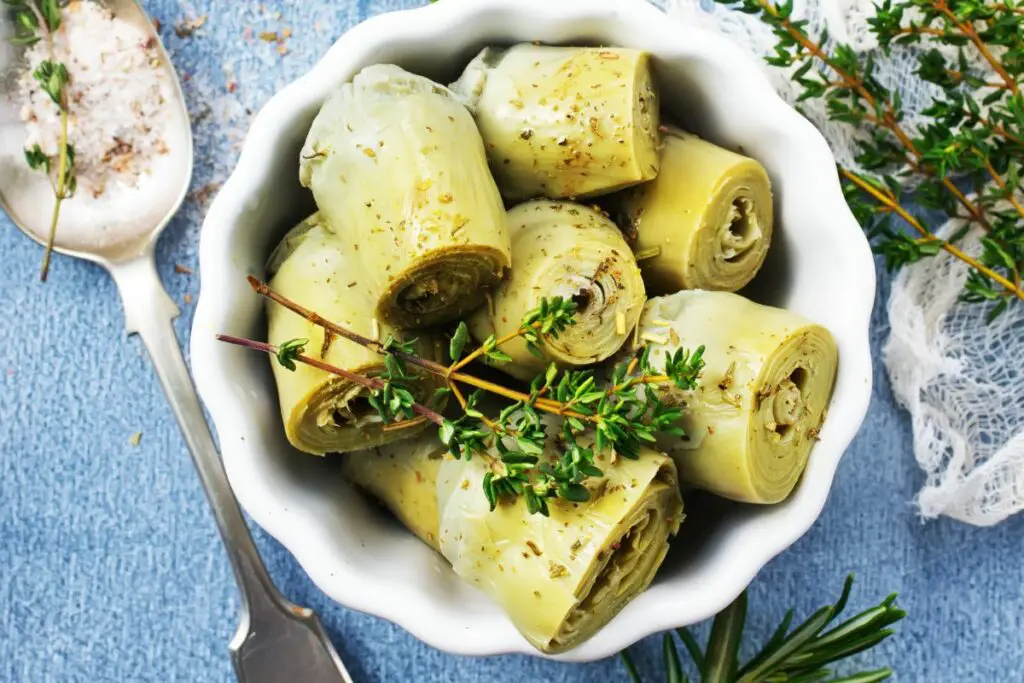
Artichoke is certainly one of my favorite options. They’re high in protein and essential vitamins and minerals. Enjoy them steamed, roasted, or in dips and spreads. They’re also a good source of fiber and have been linked to improved digestion. One cup of artichoke contains almost 5 grams of protein.
Artichokes can be used in a variety of dishes and can be prepared in many different ways. They can be steamed, boiled, grilled, or sautéed and are often paired with garlic, lemon, and olive oil. They can be added to pasta dishes, salads, pizzas, and sandwiches.
Sometimes I pureed it and added it to soups and dips. Add chopped artichokes to your favorite greens and fruits for added fiber and antioxidants to make a healthy smoothie.
11. Amaranth
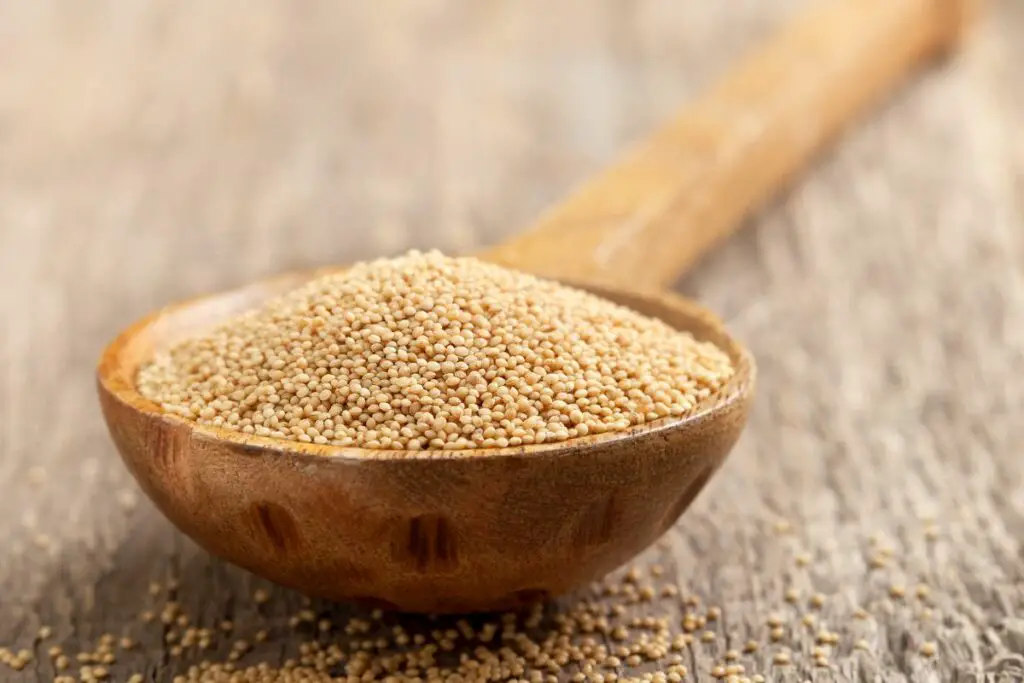
Amaranth is a tiny grain that packs a big punch of plant-based protein. It’s high in protein, fiber, and minerals and gluten-free, making it a great option for those with gluten intolerance.
It contains 6 grams of protein per cooked cup and can be used in various dishes, such as porridge, cakes, and bread recipes, and even as a replacement for rice.
Amaranth can be used in a variety of ways in food and cooking. It can be cooked as a grain and used as a side dish or added to soups and stews. It can also be ground into flour and used to make gluten-free bread recipes and pastries.
Additionally, amaranth can be added to smoothies to boost protein and nutrients. Simply add a handful of cooked or uncooked amaranth to your smoothie base along with your favorite fruits and liquids.
12. Chlorella

Chlorella is a type of green algae that is high in protein, vitamins, and minerals. It can be added to smoothies and juices for an added protein boost and also has potential health benefits such as improved immune function. One serving of two teaspoons of chlorella contains 3 grams of protein.
13. Spirulina

Spirulina is another type of blue-green algae that is high in protein, antioxidants, and anti-inflammatory compounds and contains all the essential amino acids that your body needs. It can be added to smoothies and soups and even used as a seasoning.
Spirulina is one of the highest quality plant-based proteins available and is really an excellent option for vegetarians and vegans looking to add more protein to their diet. Every two tablespoons of spirulina powder contain about 12 grams of protein.
14. Buckwheat

Buckwheat is a gluten-free grain that has a decent amount of protein and essential amino acids. It is also a good source of other essential nutrients such as magnesium, potassium, and zinc and contains 6 grams of protein per cooked cup.
Buckwheat can be used in a variety of ways in food and cooking. It can be ground into flour and used as a flour substitute to make pancakes, crepes, and bread. It can also be cooked as a side dish, similar to rice or quinoa.
In smoothies, buckwheat groats can be added for a boost of protein and fiber. They can also be soaked overnight and blended for a creamy texture—experiment with using buckwheat in different recipes to add nutrition and a unique nutty flavor to your meals.
15. Nutritional Yeast
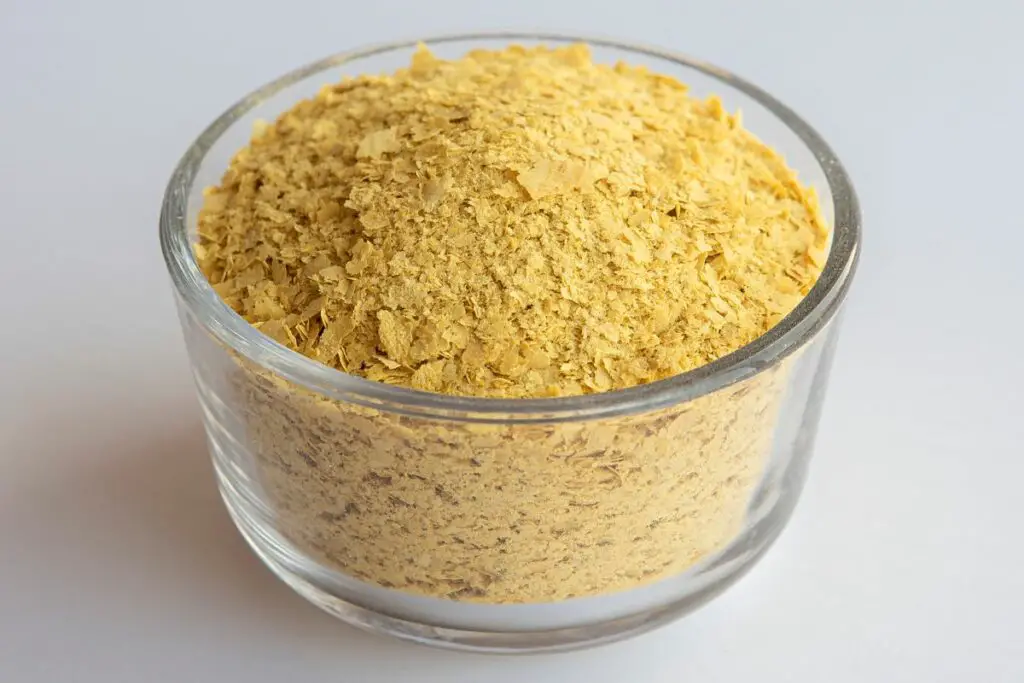
Nutritional yeast is the secret ingredient that could take your plant-based dishes to the next level. I should have really put it at the top of this list. It packs a punch of protein, with 8 grams of protein per two tablespoons, and it’s also loaded with essential B vitamins and minerals.
Now, I know some of you might be thinking, ‘But Jen, how do I even use this stuff?’ Well, let me tell you, it’s incredibly versatile. I like to sprinkle it on top of popcorn for a savory snack, add it to scrambled eggs for a cheesy twist, or even use it as a substitute for cheese in my pasta dishes.
And don’t even get me started on baking. You can use nutritional yeast to make a vegan cheese sauce or mix it into a dough for bread and crackers that pack a punch of flavor.
And let’s not forget dips and spreads. Mix it with mayo and seasonings for a vegan ranch dressing, or add it to hummus and guacamole for an extra boost of flavor and protein.
So, go ahead, and get creative with nutritional yeast. Trust me, your taste buds (and your muscles) will thank you.”
If you have read articles that don’t favor nutritional yeast and now you have some concerns about adding it to your diet, check out my video, where I try to address some of these concerns about nutritional yeast.
16. Teff

Teff is a tiny grain that is high in protein, iron, and other essential minerals. It can be used in a variety of dishes, such as porridge, cakes, and breads.
It is also gluten-free and a good fiber source and other essential nutrients. It contains 10 grams of protein per cooked cup.
17. Oats
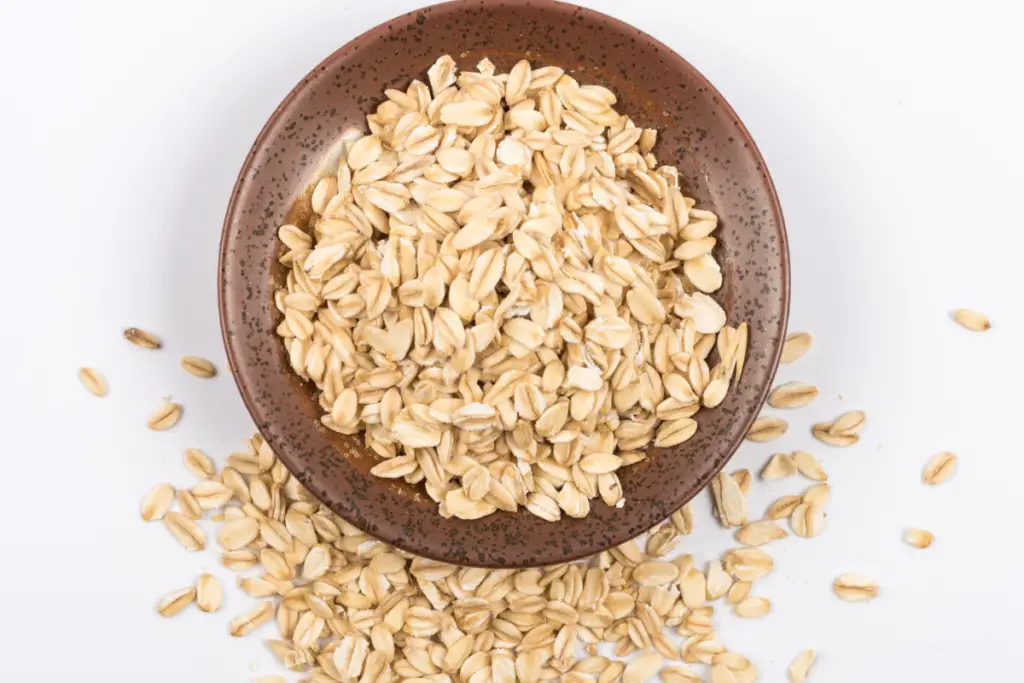
Many people eat oats because they are a good source of low glycemic crabs but did you know that oats are also a decent source of protein?
Yes, oats are cheap vegetarian protein sources containing many essential amino acids. Oats (rolled) contain about 6 grams of protein per 1/2 cup.
Oats can be ground into oat flour and used in baking, added to smoothies for added texture and nutrition, or cooked and served as a healthy breakfast option with milk and fruit.
Oats can also be used as breading for plant-based meats or as a topping for yogurt or oatmeal bowls. They can also be used to make oat milk as an alternative to dairy milk.
Oats are versatile ingredient that can be used in many ways to add nutrition and texture to meals and smoothies.
If you are not sure which oats to eat, check out my latest post here: 5 Best Oats To Make A Perfect Oatmeal.
18. Broccoli

Broccoli is a true gem in the vegetable world! Not only is it delicious, but it’s also packed with vitamins, fiber, and potassium. And it does contain some plant-based protein (3g for one cup) though it’s not considered as a good source of protein as some other foods in this list, such as legumes, nuts, nutritional yeast, or spirulina.
But that’s not to say it isn’t a great addition to any meal. I love to steam or roast it as a side dish, add it to soups and stews, and even mix it into pasta or grain-based salads.
And don’t forget, a little bit of creativity can go a long way – Here are my 8 Broccoli Smoothies For Weight Loss That Actually Work!
In Summary
So, we’ve covered some serious ground here on high-protein foods that are not meat. From lentils to Buckwheat, these non-meat options are not only packed with protein, but they’re also versatile and easy to incorporate into your diet.
And let’s be real, as someone who’s always on the lookout for ways to optimize my diet and performance; I’m always looking for new ways to get my protein intake. And I’m here to tell you, these non-meat options are a great addition to your meals.
But if you want to take it to the next level, be sure to check out my other article on “10 Complete Plant Protein Sources That Don’t Need Combining“. These plant-based protein sources will give you all the amino acids you need in just one scoop! Check them out now!
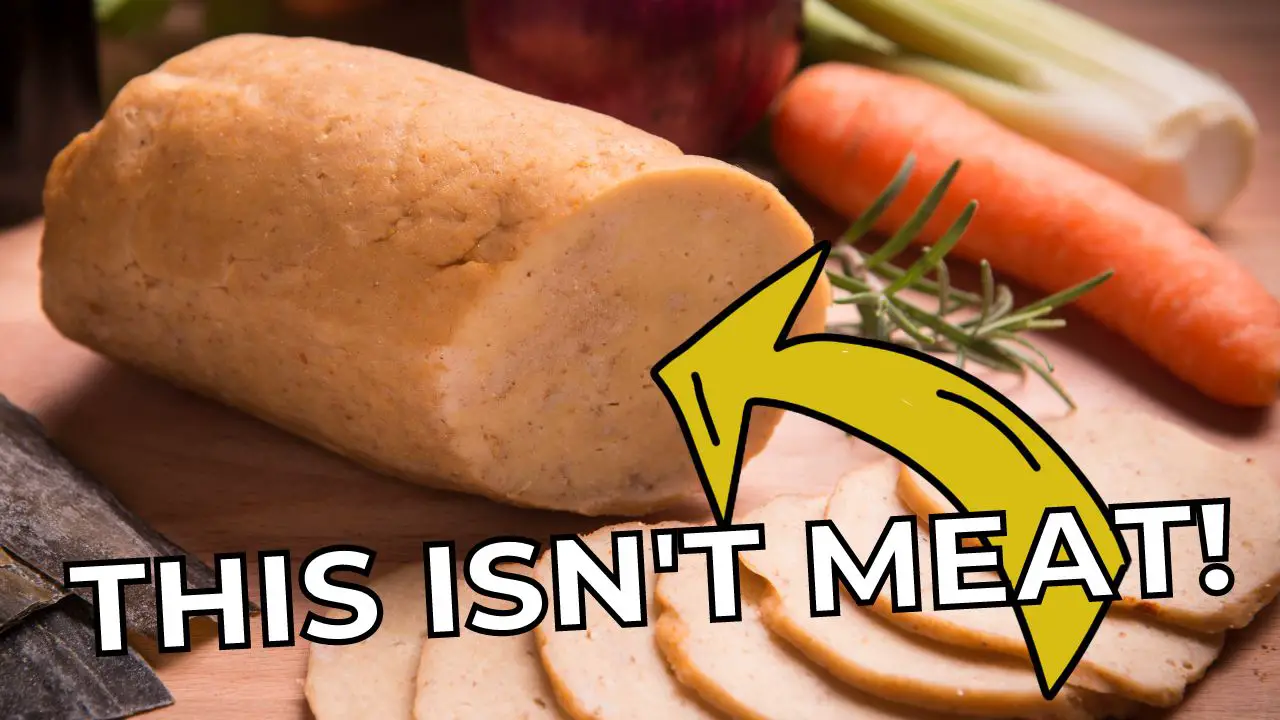
Thanks for the tips! My hormone specialist wants me to eat 138g of protein a day and I hate meat! Ugh! It has been so difficult to accomplish without relying on protein powders.I’m excited to incorporate some of these foods into my diet.